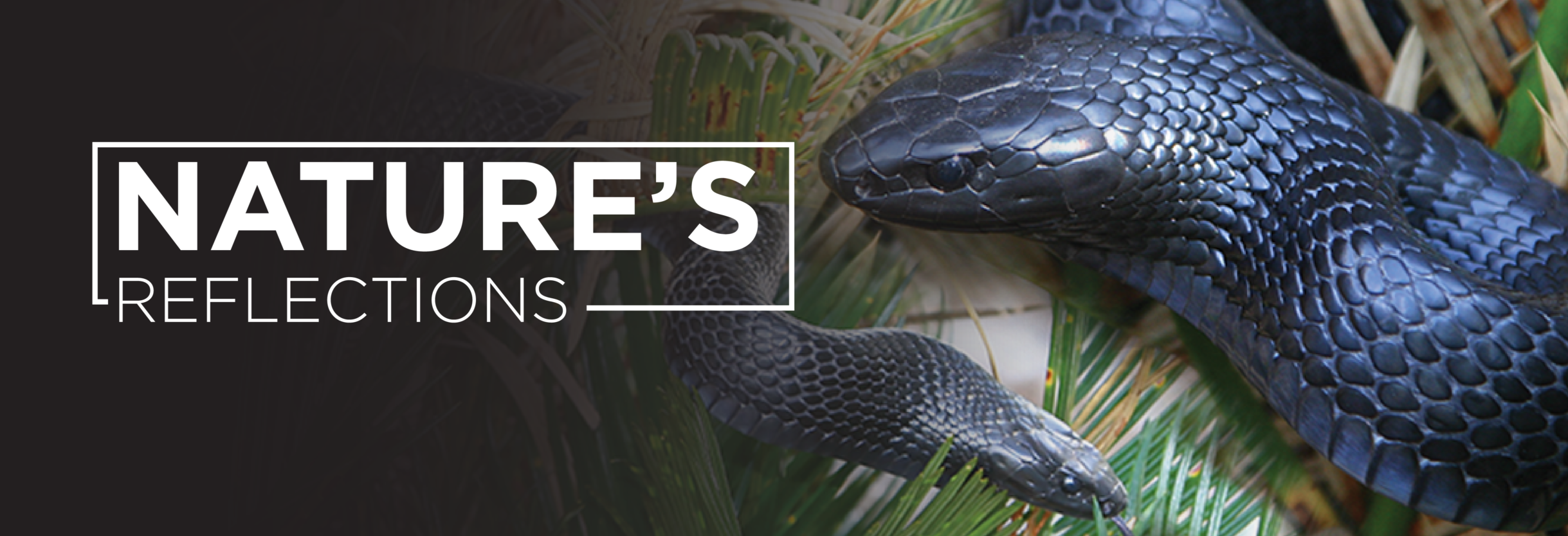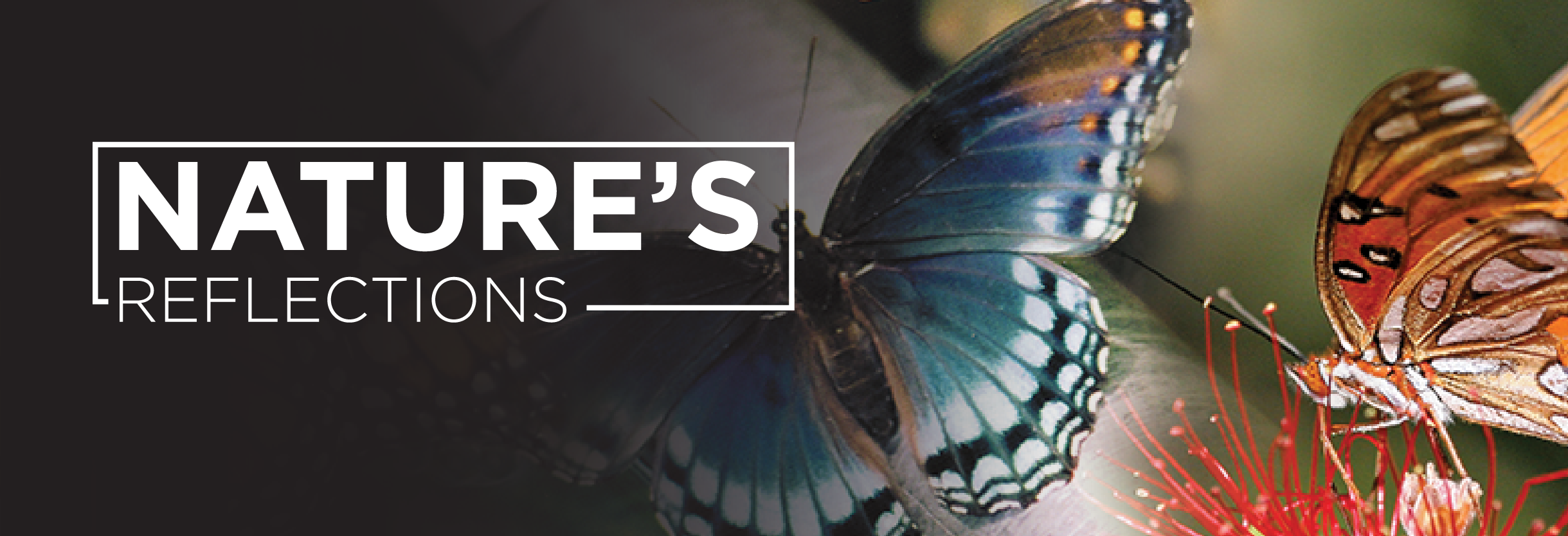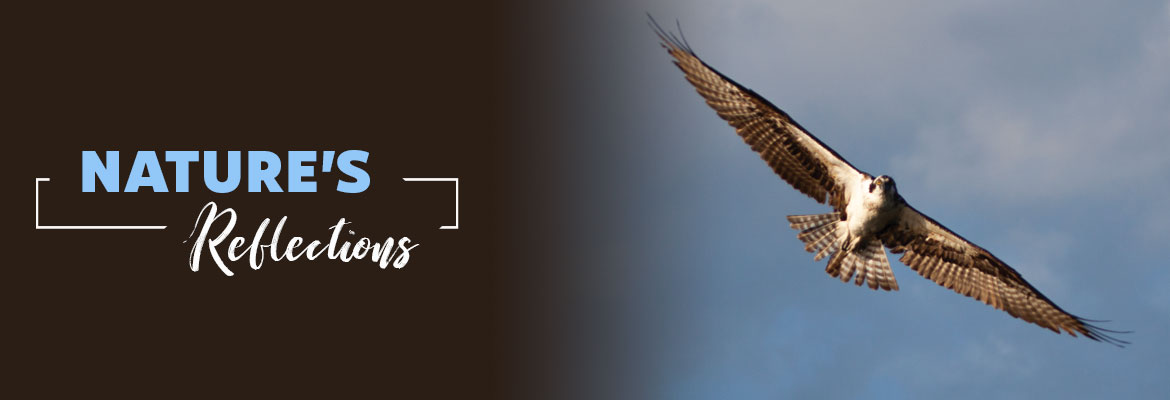Nature’s Reflections – Eastern Indigo Snake
A RARE, YET BENEFICIAL FRIEND TO HAVE AROUND
While it may make one’s heart jump at first sight, the Eastern indigo snake (Drymarchon corais couperi) is harmless and beneficial. This rare snake plays an important role in Florida’s delicate ecosystem. The record length is 104 inches. Yes, that’s 8 foot, 8 inches. It is the largest of the native nonvenomous snakes found in North America and is federally protected. It has been classified as a threatened species in Florida since 1971. It is illegal (a third-degree felony) to harm, handle, harass or possess the indigo snake.
The main reason for the indigo’s decline is habitat loss. With a documented range of 400 to 1,400 acres, indigos need relatively large areas of undeveloped land to flourish. Indigos are not restricted to sand habitats. They are commonly found around ponds, cabbage palm and hardwood hammocks.
Indigos are more black than blue with smooth, shiny scales and a reddish chin and throat. Its young are lighter in color and have a faint banded pattern. This reptile often seeks a sheltered refuge such as gopher tortoise or armadillo burrows and holes in stumps. These dens are used for egg laying, shedding and protection from temperature extremes. Indigos breed from October to February. Four to 12 eggs are laid in May or June, but do not hatch until August or September. Indigo hatchlings are usually about 16 inches long.
Indigo snakes feed heavily on frogs and other snakes. Indigos are immune to venom, which allows it to eat rattlesnakes and pit vipers as well as rodents and small prey. Its large size and strong jaws enable it to eat its prey live.
This snake is vulnerable to highway mortality, feral pigs, pollutants and killing by uninformed persons. Indigos may not be kept as pets, picked up, collected or sold per Florida Statute.
If you’re lucky enough to see an Eastern indigo, take a moment to appreciate its usefulness and let it be. It may give you a fright, but it is not aggressive and quite harmless. It is an important and beneficial segment of Florida’s wildlife.
Column & photos by Sandi Staton – sandi.staton@gmail.com
Read the full Nature’s Reflections article in the November 2018 SECO News online.






